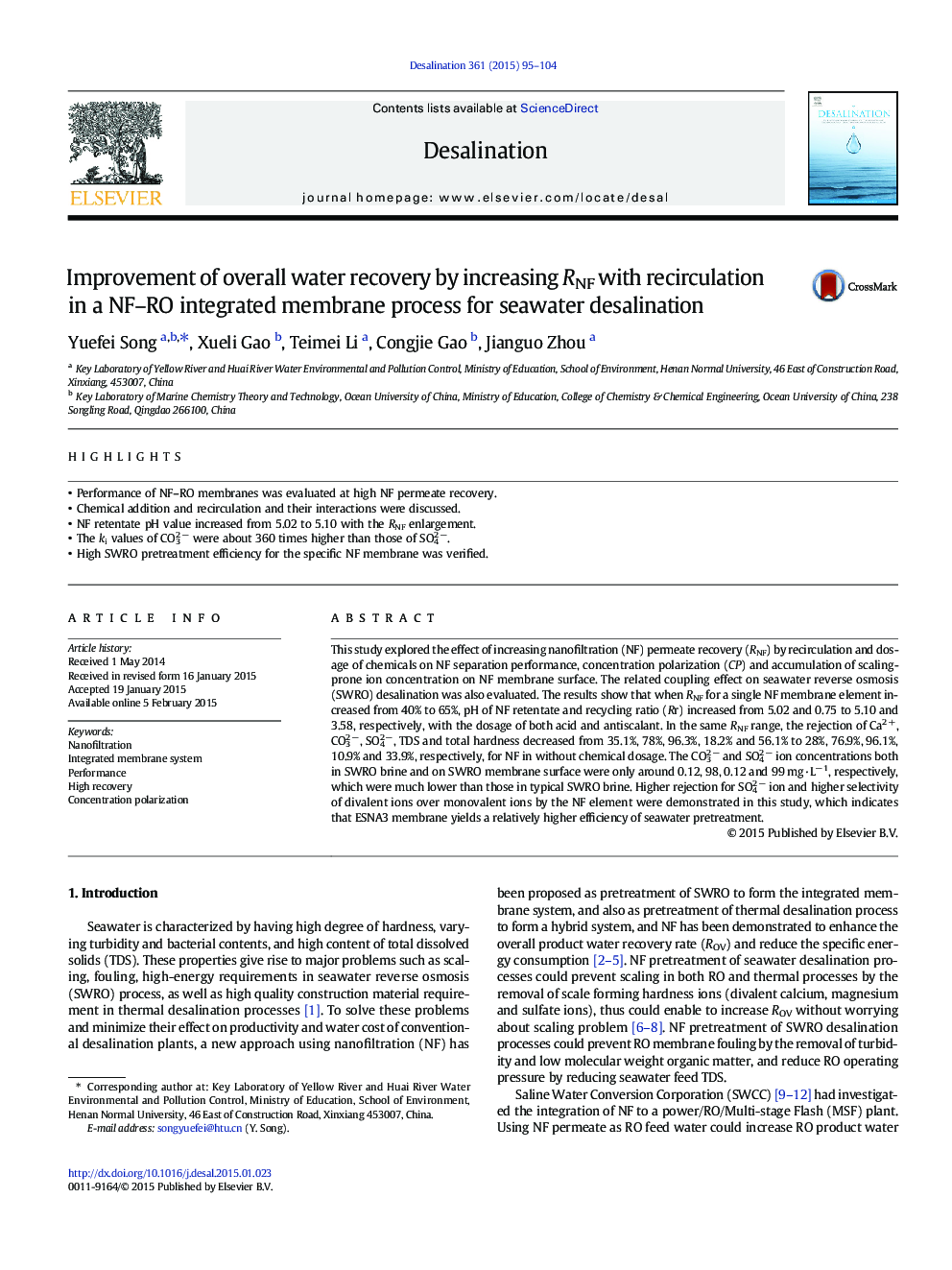| Article ID | Journal | Published Year | Pages | File Type |
|---|---|---|---|---|
| 623186 | Desalination | 2015 | 10 Pages |
Abstract
This study explored the effect of increasing nanofiltration (NF) permeate recovery (RNF) by recirculation and dosage of chemicals on NF separation performance, concentration polarization (CP) and accumulation of scaling-prone ion concentration on NF membrane surface. The related coupling effect on seawater reverse osmosis (SWRO) desalination was also evaluated. The results show that when RNF for a single NF membrane element increased from 40% to 65%, pH of NF retentate and recycling ratio (Rr) increased from 5.02 and 0.75 to 5.10 and 3.58, respectively, with the dosage of both acid and antiscalant. In the same RNF range, the rejection of Ca2 +, CO32 â, SO42 â, TDS and total hardness decreased from 35.1%, 78%, 96.3%, 18.2% and 56.1% to 28%, 76.9%, 96.1%, 10.9% and 33.9%, respectively, for NF in without chemical dosage. The CO32 â and SO42 â ion concentrations both in SWRO brine and on SWRO membrane surface were only around 0.12, 98, 0.12 and 99 mg·Lâ 1, respectively, which were much lower than those in typical SWRO brine. Higher rejection for SO42 â ion and higher selectivity of divalent ions over monovalent ions by the NF element were demonstrated in this study, which indicates that ESNA3 membrane yields a relatively higher efficiency of seawater pretreatment.
Related Topics
Physical Sciences and Engineering
Chemical Engineering
Filtration and Separation
Authors
Yuefei Song, Xueli Gao, Teimei Li, Congjie Gao, Jianguo Zhou,
